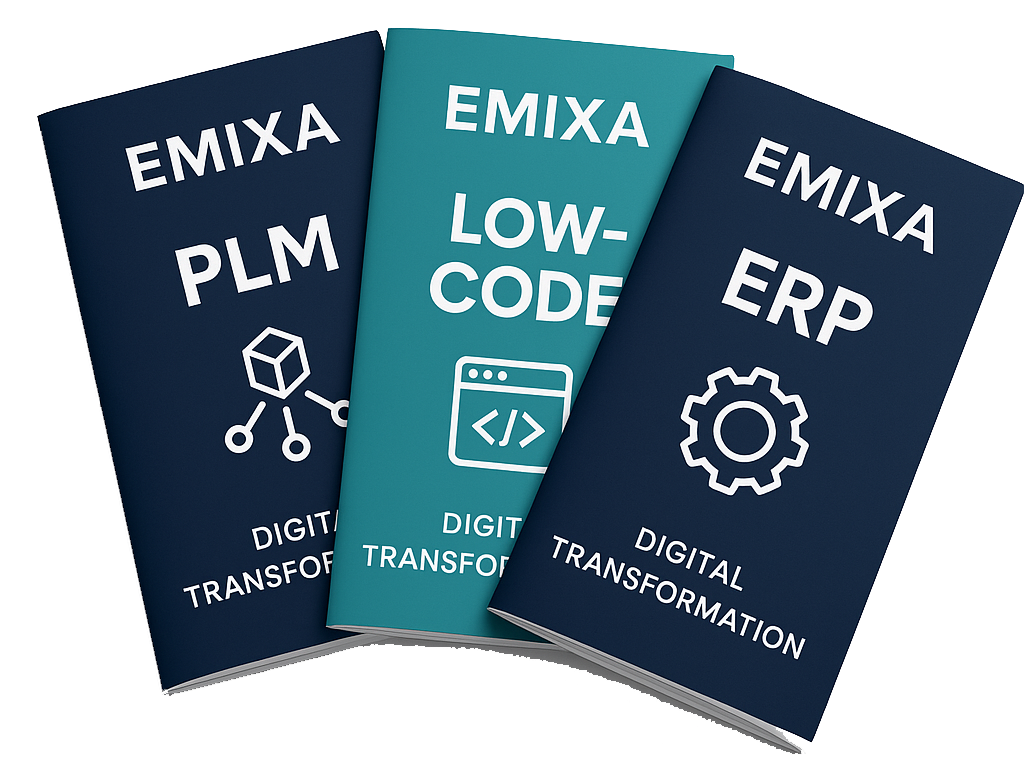
- Integration
- Applications
- Lean Manufacturing
What is Just-In-Time (JIT) and why is it the future of Smart Logistics?
In today’s manufacturing landscape, efficiency, responsiveness, and cost control are decisive factors in staying competitive. Traditional production and inventory management often rely on “just in case” strategies: keeping excess stock, building safety margins, and preparing for unpredictable demand. While this approach seems safe, it leads to high inventory costs, wasted materials, and slower response times.
Just-In-Time (JIT) management challenges this paradigm. Instead of overstocking or overproducing, JIT aligns production directly with real customer demand. The ultimate goal is to ensure that every product, part, or resource is delivered exactly when needed, not earlier, not later. This philosophy, rooted in lean manufacturing, reduces waste, enhances flexibility, and strengthens the ability to deliver with precision. In other words: JIT is not just about efficiency; it is about creating resilient and future-ready manufacturing systems.
What Does Just-In-Time Mean?
Just-In-Time (JIT) is a production and logistics strategy designed to minimize inventory, reduce waste, and synchronize manufacturing with actual demand. It literally translates to “precisely on time.” Under JIT, goods are produced or delivered only when they are required, not before. This approach ensures that manufacturers can meet customer demand without tying up capital in large stockpiles or risking obsolescence.
The origins of JIT trace back to the Toyota Production System. Facing resource scarcity, Toyota developed a system that prioritized efficiency, flexibility, and the elimination of waste. Instead of planning production based on forecasts, Toyota built cars in response to actual customer orders, with suppliers delivering parts exactly when needed on the assembly line.
This contrasts sharply with traditional planning methods. In a forecast-driven environment, a factory might produce 1,000 units in advance and store them until orders arrive. With JIT, the factory produces only when the customer order is confirmed, and suppliers deliver components to support this exact production schedule.
Imagine an automotive manufacturer: rather than storing thousands of seats in a warehouse, the supplier delivers them directly to the assembly line on the day of production. This synchronization reduces waste, improves cash flow, and makes the system agile enough to respond to sudden market shifts.
Why Choose Just-In-Time?
The primary objectives of JIT are clear: minimize waste, reduce inventory, maintain consistent production, and ensure high product quality. But its benefits extend beyond operational efficiency:
Manufacturers adopting JIT gain:
- Reduced inventory costs: Warehousing, handling, and capital tied up in stock are minimized.
- Lower waste levels: By producing only what is needed, overproduction and obsolescence are avoided.
- Improved quality: Smaller, controlled production runs make it easier to detect and correct issues quickly.
- Customer satisfaction: JIT enables faster responses to changing market demand.
- Shorter lead times: Streamlined processes reduce the time between order intake and delivery.
Ultimately, JIT is not just about cost savings; it is about building a system that is responsive, customer-driven, and sustainable in a competitive market.
How Does Just-In-Time Work in Practice?
JIT requires seamless coordination across the production process, from suppliers to the shop floor to delivery. Timing, accurate data, and strong collaboration are critical.
A JIT production process typically follows these steps:
- Customer demand triggers production: Orders initiate the flow, not forecasts.
- Suppliers deliver parts as needed: No stockpiles; parts arrive exactly when required for assembly.
- Production flows continuously: Workstations are synchronized to avoid bottlenecks.
- Finished products leave “just in time”: Goods are shipped immediately to customers or retailers.

To achieve this, manufacturers rely on the principles of lean manufacturing. JIT directly addresses the eight classic forms of waste: overproduction, excess inventory, unnecessary transport, waiting time, defects, overprocessing, motion waste, and unused talent.
The 5S methodology: Sort, Set in order, Shine, Standardize, and Sustain. They play a vital role in supporting JIT by creating a clean, efficient, and standardized work environment. Together with visual tools like Kanban boards, manufacturers can track workflows, signal demand, and ensure that the right parts and resources are always available at the right moment.
A practical example is again found in automotive production. Toyota’s supply chain is built around Kanban signals, which indicate precisely when and what components need to be delivered. This coordination ensures that no resources are wasted, and every vehicle rolls off the line just in time.
Limitations of Just-In-Time
While JIT offers significant advantages, it is not without risks. Its dependency on timing and external suppliers makes it vulnerable to:
- Delivery delays: If a supplier misses a shipment, production can grind to a halt.
- Demand fluctuations: Sudden spikes in orders can overwhelm a finely tuned system.
- Supply chain disruptions: Global events such as natural disasters, geopolitical tensions, or pandemics can destabilize JIT operations.
To mitigate these risks, manufacturers increasingly integrate advanced technologies:
- Predictive analytics to forecast demand fluctuations with greater accuracy.
- Prescriptive analytics to recommend proactive actions in response to risks.
- Manufacturing Execution Systems (MES) to monitor, control, and optimize real-time production.
- Enterprise Resource Planning (ERP) systems to align supply chain, finance, and production on a single platform.
These digital tools transform JIT from a lean philosophy into a data-driven, smart manufacturing strategy, enabling companies to manage complexity and uncertainty more effectively.

Where is JIT Applied?
JIT thrives in industries where precision, cost control, and flexibility are critical. Notable examples include:
- Automotive manufacturing: The birthplace of JIT, where synchronized supply chains enable efficient vehicle assembly.
- High-tech industries: Electronics and semiconductor companies leverage JIT to keep pace with rapid innovation cycles.
- Predictive manufacturing sectors: Companies using advanced analytics to forecast demand and adapt quickly benefit greatly from JIT principles.
However, JIT is not universally applicable without adaptation. In industries with highly unpredictable demand or extremely complex global supply chains, implementing JIT requires careful design and robust digital support. Customer expectations, product value, and supply chain complexity all influence the feasibility and success of JIT in different contexts.
Just-In-Time for Smart Logistics
As manufacturing transitions into the era of Smart Logistics, JIT becomes more relevant than ever. Modern supply chains are no longer linear they are interconnected, data-driven, and customer-centric.
By integrating JIT with digital platforms like MES and ERP systems, manufacturers can achieve a level of responsiveness and agility that traditional systems cannot match. The combination of lean principles, predictive analytics, and real-time data creates a supply chain that is not only efficient but also resilient to disruption.
For manufacturers, the takeaway is clear: adopting JIT is not just about reducing inventory. It is about building smarter, leaner, and more customer-focused production systems that can thrive in the fast-changing environment of modern manufacturing.

Peter Zonneveld, Senior Managing Consultant
Author: Peter Zonneveld
Published date: November 21, 2025

Explore our Technology. Access our downloads center.
Access NowStart your Digital Transformation with Emixa

We help businesses transform their digital future with cutting-edge technology and strategic products & services

